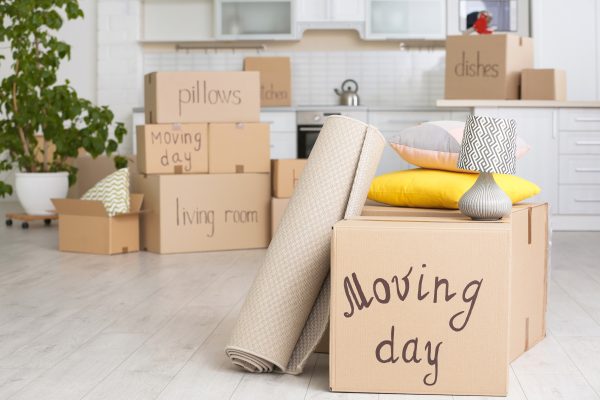Moving day can feel a bit like the start of a big adventure—exciting but filled with unknowns. Whether you’re moving a few streets over in Hilton, NY, or across state lines, knowing what to expect on moving day can help you feel more in control. With the right preparation, the whole process can go from a chaotic frenzy to a smooth, well-coordinated transition.
From the moment the movers arrive to when your last box is unloaded, this guide will give you a clear idea of each step of the journey. Here, we’ll cover what happens when the movers first arrive, how they handle your belongings, and how you can stay informed during the entire process.

Preparing for Moving Day: What to Do Before the Movers Arrive
Preparation is key to a smooth moving day. The night before, take a little time to get ready so you’re not rushing around in the morning. Start by making sure everything is packed and labeled clearly. Labeling not only helps movers know where each box belongs, but it also helps them handle fragile items with care.
On the morning of your move, double-check that all walkways are clear—inside and outside. Clear paths make it easier for the movers to maneuver, especially with bulky furniture. It’s also a good idea to have any important documents or essentials, like phone chargers and snacks, in a separate bag so you don’t accidentally pack them.
By taking these steps, you’ll help set the stage for a productive moving day, making things easier for both you and the movers.
What Happens When the Movers Arrive?
When the movers arrive, they typically start with a quick introduction and a walkthrough of your home. This initial meeting helps everyone get on the same page. The movers will usually confirm any special instructions you have, like which items need extra care or what should be loaded first.
After the walkthrough, there’s usually some paperwork to handle. You may need to sign off on an inventory list or other forms that confirm details about the move. This paperwork helps ensure everyone’s aligned on the services provided and what will be moved. The whole process is designed to set clear expectations, so don’t hesitate to ask questions if anything’s unclear.
Once the introductions and paperwork are out of the way, the movers get down to business. They’ll start packing and loading according to the plan you’ve discussed, and you’ll see your move taking shape right before your eyes.
Packing and Loading: How Movers Handle Your Belongings
Once the paperwork is complete, the movers begin packing and loading your items with care. They’ll typically start with the heavier furniture and work their way through the boxes, loading the truck in a way that keeps everything secure and balanced. For fragile items like glassware or antiques, movers often use special padding and wrapping to ensure they’re well-protected during the journey.
Movers are trained to maximize space efficiently, so they often pack the truck strategically. Delicate items are carefully placed to avoid shifting, and heavier items are secured to prevent any movement that could cause damage. If you’ve opted for packing services, they’ll also take care of boxing up smaller items, saving you the hassle and making sure everything is ready for the road.
Watching the movers handle your belongings with skill and care can be reassuring, knowing that they’re focused on keeping everything safe from point A to point B.
Understanding Moving Day Logistics: Timing and Communication
Good communication is key to a successful move, and your movers will keep you updated on timing and progress throughout the day. At the start, they’ll provide an estimated timeline based on the size of your move and any specific needs you’ve discussed. It’s helpful to exchange contact information, so you can stay in touch in case any adjustments arise.
Even with the best planning, unexpected delays can happen. Traffic, weather, or unexpected obstacles can sometimes affect the timeline. In these cases, your movers will let you know about any changes as soon as possible. By keeping open lines of communication, you’ll know what to expect and can plan accordingly.
Staying informed and being flexible can make moving day less stressful, as you’ll feel more in control and aware of each step.
What to Expect During Transport
Once everything is loaded, the transport phase begins. If you’re moving locally within Hilton, NY, the drive will likely be straightforward. For longer moves, your movers might update you on their progress or provide an estimated arrival time at your new home.
During transport, professional movers take steps to secure your belongings within the truck. Heavy furniture is typically strapped down, and fragile items are carefully packed to prevent shifting. Movers are skilled at navigating the road with a full load, ensuring a smooth ride for your possessions.
You may want to keep in touch with the movers during transit, especially for long-distance moves. Many companies offer tracking options or direct contact with the driver, so you’re always in the loop. Knowing that your belongings are on their way can offer some peace of mind as you prepare for their arrival at your new home.
Unloading and Settling In: The Final Steps of Moving Day
When the movers arrive at your new home, the unloading process begins. They’ll typically start by placing larger items like furniture in the rooms you’ve designated. If you’ve labeled your boxes with room names, the movers will bring them to the corresponding areas, saving you time and effort later.
As the movers unload, it’s a good idea to supervise and confirm the placement of items. If you notice anything amiss, like a box that needs extra care or a piece of furniture that requires assembly, communicate with the movers—they’re there to help make the process as smooth as possible.
Once everything is unloaded, it’s time for a quick inspection. Check your belongings for any damages and confirm that all items are accounted for. With everything in its place, you can finally begin the process of settling into your new space. The heavy lifting is over, and you’re one step closer to making your new house feel like home.
Related Posts

How to Lower the Cost of Your Move in Pittsford, NY

How to Prepare for a Smooth Moving Day in Pittsford, NY

